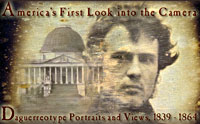Howard County Historical Society [MD]
The Howard County Historical Society is dedicated to preserving the history of Howard County, Maryland, from its origins in the colonial days to its current state as a major suburban area of Baltimore. The society owns and operates a local history museum, housed in the historic Presbyterian Church, and a library, which is located in the historic Ellicot City schoolhouse.
The society offers exhibits, guided tours and research resources. The website offers historical information regarding Howard County as well as visitor information.
